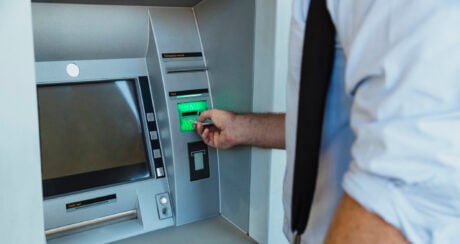Credit card churning, or hacking, is a personal finance strategy that involves leveraging credit card sign-up bonuses to rack up points and miles, then closing the card after a certain period. The intention is to cycle through the cards, opening and closing them one after another, to collect the most points possible.
While credit card churning can help you get thousands of points, there are risks associated with this strategy. It’s not as simple as just signing up, collecting the points and closing the card. This hack can hinder your financial goals and negatively impact your credit score.
Credit card churning explained
Churning is the process of opening one credit card after another, for the length of time required to access the sign-up bonus points. The points can range from 50,000 to 200,000. Most welcome offers are between 75,000 to 150,000.
For example, the NAB Qantas Rewards Signature Card offers 90,000 points when you spend $3,000 in the first 60 days, plus 30,000 when you keep the card open for more than 12 months. This means to access the full 120,000 points, you need to pay two annual fees – when you sign up and in the second year. Instead of choosing one credit card with one bank, churning means your only focus is the points and associated fees.
For example, if you’re a Qantas Frequent Flyer member, there are various credit card offers from dozens of banks to choose from. A total of 120,000 Qantas points will get you a return flight from Sydney to Los Angeles, with points to spare. Reward cards often come with free travel insurance and complimentary airport lounge passes.
People use credit card churning to fly for free and reduce travel costs. Reward credit cards are the most common product to churn because they typically have higher sign-up bonuses and more extravagant travel benefits.
» MORE: How to use a credit card responsibly
Can you credit card churn in Australia?
While credit card churning is legal in Australia, banks and lenders tend to discourage it.– It’s important to educate yourself on the true cost of credit card hacking; it can put consumers at financial risk. This strategy is a controversial practice because it requires financial savviness and attention. Reaching the minimum spending limit to access the points, remembering to close it before fees kick in and juggling multiple cards is no easy process to follow.
This is why banks put limits on churning. The ANZ Frequent Flyer Black is a good example. To receive the 110,000 points, cardholders must pay the $425 annual fee, spend a minimum of $5,000 in the first three months and maintain a credit limit of at least $15,000. It’s not as easy as signing up, getting the points and closing it immediately.
Credit card churning considerations
Annual fees
Most credit cards have an annual fee, which you’ll pay when you sign up, then every 12 months after that. Usually, the higher the points, the bigger the fee. Annual fees range from $100 to $1,200, depending on the card. You’ll likely pay your first annual fee (and maybe the second) before receiving the full amount of points advertised. These aren’t free points.
Minimum spend
Some cards have a higher credit limit, and a minimum spend you have to hit in order to receive the sign-up points. For example, the Citi Prestige Qantas credit card requires you to spend $7,500 in the first 60 days to get 100,000 points. The minimum credit limit is $20,000. In short, these cards encourage big spending.
Higher interest
Unlike low rate credit cards, these products have higher interest. While you can earn up to 120,000 points on the Westpac Altitude Qantas Black credit card, the interest rate is 19.99%, compared to 13.74% with Westpac’s Low Rate card.
If you’re spending thousands of dollars to earn the points and are unable to pay it back before the interest kicks in, you risk losing more than you get back in rewards.
Damage to credit score & reputation
Your credit score is determined by the amount of money you owe, your repayment history, whether you pay bills on time and the number of credit applications you’ve made.
If you’re applying for multiple credit cards at a time, and a few per year, it’ll likely impact your credit score and standing. This will be detrimental in the long run when you apply for a loan. If you have two credit cards, each with a $25,000 limit, it could affect a future home loan application by a sizable amount. And, if you need to get a certain credit card at some point in the future, you might have trouble getting approved.
The temptation & stress
Credit cards are tempting by design, especially if you have a rewards product – you get points for every dollar you spend. But just like with any debt, credit cards should be used with caution. We live in a credit card culture, where it’s accepted that we hold debt. It’s important to be honest with yourself and only take on a credit limit you’re comfortable with.
Finding the best cards, learning the systems of new banks, hitting the minimum spending limit, paying off the monthly bill in full, not overspending and closing the card strategically to avoid the second annual fee, is unnecessary stress for most consumers.
Sign-up bonuses are designed to lure consumers in. Always check the fine print; the annual fee and interest rate can change after 12 months.
» MORE: Can I buy crypto with a credit card?
How to hack credit cards
The typical process for churning credit cards is as follows:
- Search and compare credit cards associated with your airline or issuer of preference. For example, Qantas frequent flyer credit cards.
- Weigh up the points, annual fee, minimum spend, credit limit, interest rate, interest-free period, associated fees, the bank, and the terms and conditions.
- Apply for the credit card online. If necessary, request a free credit report before you submit an application. There are three major credit reporting bureaus: Equifax, Experian, and Illion.
- Activate the credit card and meet the eligibility requirements to receive the points. This will be different for every card.
- Check that the points have been added to your frequent flyer membership. Banks transfer points directly to frequent flyer accounts.
- Close the credit card – in the minimum amount of time to maximise gains.
The risks, rewards & alternatives
While credit card churning can help you fly for free, access travel benefits, introduce you to different banks and even build your credit score, rewards cards aren’t for beginners. They come with higher fees, interest rates and more complicated Terms and Conditions compared to the low rate, ‘lightweight’ cards.
There are credit cards with smaller welcome offers and lower fees that are a good place to start to learn about and leverage the world of rewards – without putting yourself at risk.
Frequently asked questions about credit card churning
Yes, it’s legal, but banks and lenders tend to discourage it because it can put customers in precarious situations.
There’s no specific rule or guidelines for how often you can apply for a credit card – but some cards only give points if you hold it for 12 months. Cycling cards every year is a common practice for those using the churning strategy.
DIVE EVEN DEEPER

What to Know About Card Skimmers
A card skimmer is a device used to steal payment information at ATMs, EFTPOS terminals and other places you’d use a debit or credit card.

How to Spot and Avoid Credit Card Scams
Knowledge is power, so being able to spot the signs of credit card scams can help protect you and your money.

How Thieves Obtain And Use Stolen Credit Cards
Thieves obtain stolen credit cards through frauds and scams, and then use those card details to withdraw cash, buy items to resell, and more.

Can You Tap On With A Credit Card On A Train?
You can tap on with a credit or debit card on a train in Sydney, Newcastle, Brisbane, Gold Coast and Adelaide — and soon in Melbourne and Canberra.

